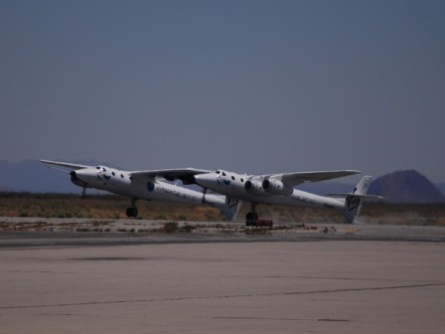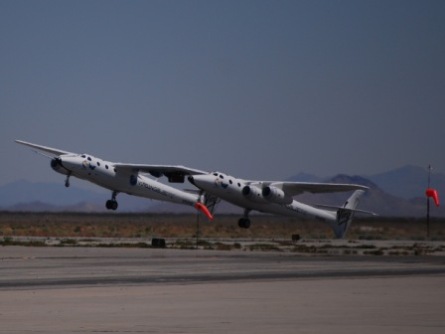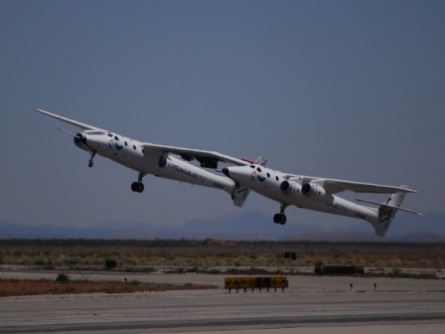A tail strike was suffered by Virgin Galactic's WhiteKnight Two prototype Virgin Mothership (VMS) Eve during its fourth test flight on 20 April.
Coming into land for a touch-and-go VMS Eve's pilot was seen to input full right rudder when a 15kt crosswind lifted the wing's starboard side but the prototype still rolled to the left and with a higher than usual nose pitch up the port boom fin's tail struck the ground. Continuing with the touch and go manoeuvre the aircraft took-off but continued to roll left until the pilot overcorrected and the aircraft rolled back right for a nominal climb attitude.
Pictures were obtained by Flightglobal.com of the touch and go and the moment the tail strike occured. The 4h flight test began at 8:08h local time at Mojave air and spaceport where the aircraft's developer Scaled Composites is based and ended at 12:08h.
|
|---|
VMS Eve suffers tail strike as crosswind induces roll left |
|
|---|
Pilot rotates to recover but VMS Eve still rolling to port |
|
|---|
As VMS Eve climbs the port roll continues |
A witness to the flight test told Flight: "Twice while taxiing back in, [Eve] had steering issues, having to stop, come up with power on one side while holding the brakes to get the two noses straight again."
Reaching a maximum altitude of 20,000ft (6,100m) and a top speed of 140kt (259km/h) Eve retracted and extended its landing gear during the test. According to Virgin Galactic the prototype also "continued flight envelope expansion in the areas of [take-off] gross weight, centre of gravity and g" - Eve is to be able to pull a 6g descending wind up turn for training purposes. The spaceline declined to comment on the tail strike and apparent continuing directional control issues.
Eve is scheduled to fly into the Experimental Aircraft Assocation's AirVenture air show in Oshkosh, Wisconsin on 27 July and carry out flight demonstrations during that week. The 20 April 4h test suggests that Scaled is preparing for the trans-continental flight from Mojave in California to the mid-western state of Wisconsin.
The twin fuselage aircraft first flew on 21 December 2008, its second flight was on 5 February and the third, seven weeks later, on 25 March. Between each of the test flights the tail fins have seen design changes. Scaled altered the vertical stabilisers with another horn at the rudder's bottom after the first flight, larger horns after the second test and new locations for the vortex generators that had been added after 21 December 2008. Flight had reported a possible rudder problem in January.
Flight's Mojave sources have also identified the purpose of a pod previously seen on top of the starboard vertical fin. Described as a camera it appears to be monitoring tufts on the port wing aft of the vortex generators and on that aileron.
Source: Flight International





























